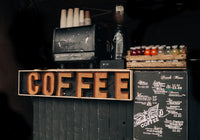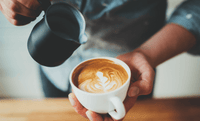- Finance
-
Shop Used Equipment
- Beverage
- Coffee
-
Cooking
- Shop all cooking
- Bratt pans
- Char grills
- Chicken rotisseries
- Combi ovens
- Contact grills
- Convection ovens
- Conveyor toasters
- Conveyor, deck and pizza ovens
- Cooktops
- Cooktop oven combos
- Crepe and pancake makers
- Fryers and oil filters
- Griddles
- Microwaves
- Pasta cookers
- Range ovens
- Rice cookers
- Salamander grills
- Sous vide
- Tandoor ovens
- Toaster Grills
- Vertical broilers
- Waffle and crepe makers
- Wok burners
- Other cooking equipment
- Dishwashers
- Food display
-
Food preparation
- Shop all food preparation
- Blenders
- Dough rollers and sheeters
- Food processors
- Fruit and veg prep
- Ice-cream machines
- Juicers
- Mixers
- Pizza prep tables
- Proofing and warming cabinets
- Sandwich and salad prep tables
- Slicers and grinders
- Sushi makers
- Vacuum packaging machines
- Other food preparation equipment
- Point of sale
-
Refrigeration
- Shop all refrigeration
- Back bar coolers and kegerators
- Blast chillers/freezers
- Chef bases
- Chest freezers
- Countertop fridges
- Display freezers
- Display fridges
- Gelato freezers
- Ice-cream machines
- Ice machines and bins
- Pizza prep tables
- Reach-in freezers
- Reach-in refrigerators
- Sandwich and salad prep tables
- Slushy machines
- Under counter freezers
- Under counter fridges
- Other refrigeration equipment
- Restaurant furniture
- Stainless steel
- End of Season Sale
- Shop all equipment
- Customers
- FAQs
- Resources
- About Us
Share
Cold drip vs. Cold brew - What's the difference?
article
Coffee is no longer just about the caffeine hit. For many, going out for coffee is now all about the sensory experience and appreciation of quality craftsmanship. Increasingly, cafes are exploring and perfecting alternative coffee brewing methods in order to attract new customers and keep things exciting for existing customers.
Cold drip and cold brew are among the hottest trends in alternative brewing right now and are a great way to add a new element to your standard coffee offering.
Both styles are coffee, both are served cold, and both are delicious. So, how different can they be?
Cold drip is a slow-brew method of producing a full-bodied, non-acidic cup, perfect for the coffee connoisseur. It is brewed in an apparatus that looks like it belongs more in a science lab than a coffee shop. Water is set to drip ever so slowly from the top chamber onto the coffee below. Every drop of water is absorbed by the ground coffee until it can't take anymore and begins to drip into the bottom chamber.
A full batch of cold drip can take anywhere from 3 to 24 hours, depending on the size of the machine. Cold drip coffee can last at least a day in the fridge without losing quality or flavour.
Crafting cold brew, on the other hand, is far less visually appealing. As glamorous as it may sound, cold brew is actually brewed in a 'bucket'. A precise ratio of coarsely ground coffee to filtered water is fully immersed and left to steep for a minimum of 12 hours, either in or out of the fridge. As the grounds slowly extract all of their goodness, the liquor becomes a syrupy, full-bodied brew with about one-third the acidity levels of hot brewed coffee. It is then filtered through a sieve or cloth to remove the coffee grinds.
Cold brew is often used as a base for iced coffees, paired with an endless combination of syrups, spices, powders and milks that are sure to suit any flavour preference.
Is it for me?
There are a number of things to consider before introducing alternate brews to your cafe. Firstly, consider your market. If the majority of your customer base is a cappuccino crowd, it's less likely they'll cross over to the dark side. On the other hand, if you have a lot of Americano or filter coffee drinkers, it may be a sign you have more customers willing to try something different. Next, you need to think about your style of venue. Does 'trendy' coffee suit your image? With cold drip, would your layout and service times accommodate this slow, bulky process? With cold brew, would you make it yourself or purchase it pre-made, and where would you store it? From where would you source the additional coffee equipment?
Side benefits
As the cold brewing method extracts less of the bitterness and acidity from the coffee compared to heated extraction, it doesn't require sugar or milk to make it palatable, though that can certainly be added if desired. This broadens the appeal to the health conscious, who may have turned their backs on calorie-laden coffees.
Another benefit of alternate brews is that they encourage additional purchases. Unlike hot coffees which need to be consumed immediately, bottled cold brew has a long shelf life and can be consumed at any time. This means a customer can purchase multiple units at a time and drink it at work or home or even on holidays - sales you wouldn't have made otherwise with traditional coffee. And on days when some people would claim"it's too hot for coffee", it gives them a purchase option they might not have had otherwise.
Whether you choose to try cold drip or cold brew, or both, alternative brewing methods can broaden your appeal and give your business a boost (or should we say, brewst)!



